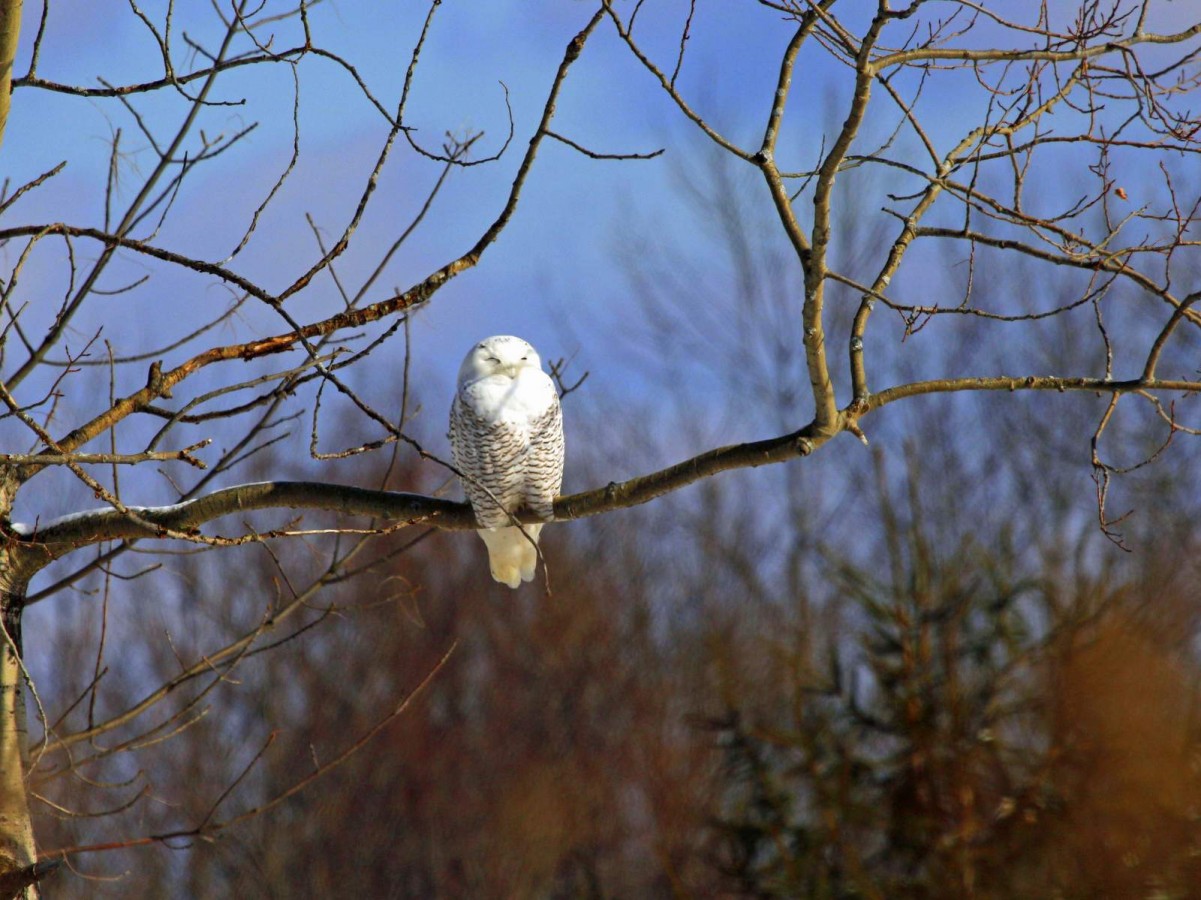In the winter of 2013-2014, there was a massive southward irruption of Snowy Owls (Bubo scandiaca); it was, by some estimates, the largest in a century. Snowies (as the species is affectionately called) breed in the Arctic and normally winter in Canada.
However, two years ago, the giant raptors showed up in unprecedented numbers from the Midwest to the Carolinas; a few stragglers even made it as far south as Mississippi and Florida and as far out to sea as Bermuda.
The story of this extraordinary event began months earlier and thousands of miles away, with a population explosion of lemmings. Lemmings, which are rodents of approximately the same size and general appearance as hamsters, are a foundational species of the Arctic: they eat the plants of the tundra and everything else eats them. Although Snowy Owls will hunt birds and mammals as small as voles or as large as snow geese, they rely primarily on lemmings to feed themselves and their chicks during the breeding season. Snowy clutch sizes are dependent on food supply: during flush years, mated pairs may lay up to 14 eggs; during times of lemming scarcity, there may be no chicks at all. In the summer of 2013, a superabundance of bite-size rodents seems to have ensured that the clutches were very large and that no chicks starved to death. As the bumper crop of young owls left the nest and struck out on their own, they were forced to move farther and farther south in order to find winter territories to occupy.
The deluge of Snowy Owls was all the more noticeable because they are a highly visible species. Unlike most owls, they are active during the day as well as at night, an adaptation to the high latitudes in which they live; there is, after all, no darkness during the Arctic summer. They have no innate fear of humans and are attracted to open, flat areas with minimal snow depth that resemble their native tundra: fields, wetlands, shorelines. For some reason, they seem to be particularly fond of airports, where they can pose a serious threat to planes.
Even people who pay little attention to birds are likely to notice the arrival of Snowy Owls because their appearance is so striking. With their mostly white plumage (females and immature birds tend to be heavily barred with brown), round heads, and piercing almond-shaped yellow eyes, they look a bit like very large, earless Persian cats. As with most raptors, females are larger than males, and a large female can be two-and-a-half feet high and have a five-foot wingspan. Although a white bird is difficult for humans to see against the blinding snow, Snowies do not seem to be taking advantage of cryptic coloration. Like all owls, they do not change the color of their plumage from season to season, and their white feathers are highly visible against the arctic summer vegetation. In addition, they only appear white to species like ourselves who cannot see UV radiation; to other animals, they appear dark gray. There are few places for prey to hide on the tundra, anyway, so perhaps their coloration is merely a practical energy-saving strategy, since melanin is energetically expensive to produce.
The future of the Snowy Owl may ultimately depend on the fate of the lemming, which in many places is increasingly uncertain. As the tundra warms because of climate change, the grasses, mosses, and lichens that lemmings eat are replaced by trees and shrubs. The rodents rely on thick, stable layers of snow in which to hide and raise their young, but warmer temperatures often bring less snow, or snow that is wet and icy. As a result of these changes, the lemming populations of Scandinavia and Greenland have dwindled, and Snowy Owls are disappearing in some parts of Europe.
In North America, however, climate change seems to be working in both species’ favor, at least for now. Snowy Owl irruptions have become an almost annual event, and we seem to be on track for another one this year. The giant white birds have already begun appearing in large numbers in the Upper Midwest, and several have been seen in the farm fields of Seneca County and at the Syracuse Hancock International Airport.


